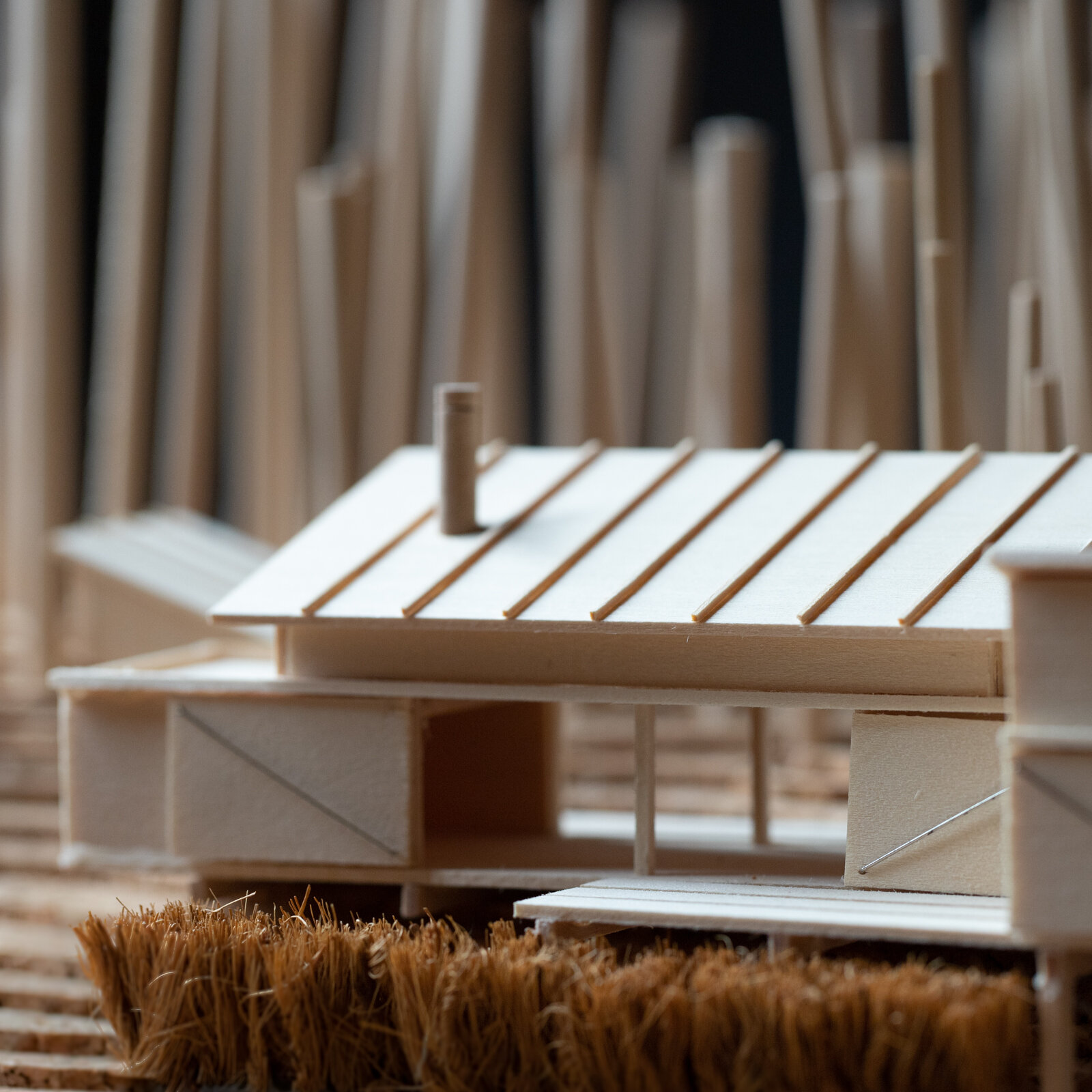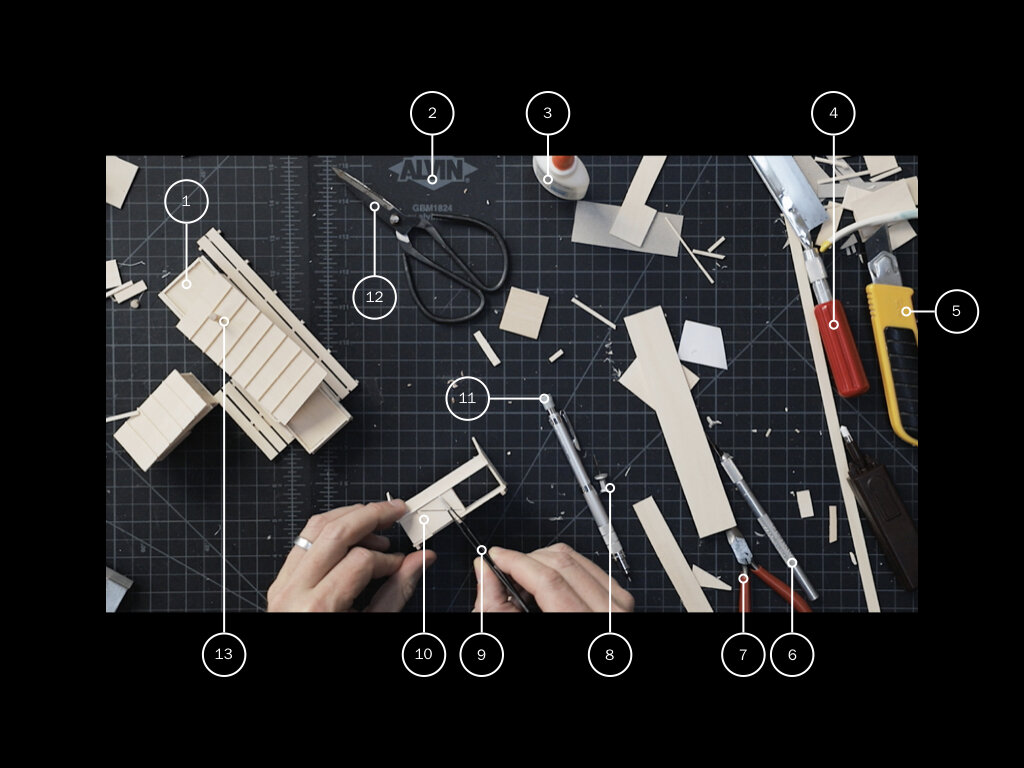Although many architects today default to digital renderings and virtual modeling, I still use physical models in my practice. I spend a lot of my professional time in digital space and perhaps that’s why I find making tangible objects so satisfying. Cutting, gluing, revising and thinking with my hands surfaces ideas I’m not able to access any other way. Equally, when you build a scale model you’re forced to confront the physics of reality.
This build is what architects call a study model. It’s essentially a three-dimensional sketch, intentionally imperfect and slightly messy. It’s an iterative design tool rather than made specifically as a presentation tool. This one was approximately a 2-hour build from start to finish, of course, that doesn’t include any of the setup or filming time necessary to make the video!
Check out the video for a behind the scenes look at my process.
I use basswood for many of my models because it’s dimensionally stable, easy to cut, takes paint without warping and has a thickness that’s appropriate for the scale I’m working with (3/32” = 1’-0”). To fasten the pieces I use a combination of hot glue and white glue. The hot glue is used more for connections which are concealed and don’t require a high degree of precision. I use white glue for components that may need to be repositioned after they’re set in place, ones that are tiny or fragile, and for parts of the model that are subject to scrutiny by clients. White glue takes longer to set but it has a nicer finished appearance.
Materials + Tools list:
Basswood sheets (1/16” thick) 2” x 24”, Skinny Sticks 1/4” x 6”x 1/16”, 1/16” square sticking (see my Amazon page for more)
Self-healing cutting mats (12” x 18” + 18” x 24”)
White PVA Glue
Fine-toothed saw (cutting dowels + square sticking)
Olfa L2 + utility blades
X-acto + #11 blades
Wire cutters (metal details) + nippers (for flush cuts of wood sticking)
Pushpin, hat pins, + T-pins (for inserting metal details in wood + making holes in cork)
Guitar string (details)…piano wire works too
Scissors (bonsai scissors are great for tight areas), I also like these Allex ones.
Hot glue gun (not pictured)
Coir mat (not pictured) for landscape elements, shrubbery, green roofscapes
Cork backed metal rule (6” + 24”) + Squares
If you enjoy these videos, you can support 30X40’s work on YouTube by investing in a course, a toolkit or a digital tool. Many thanks!





